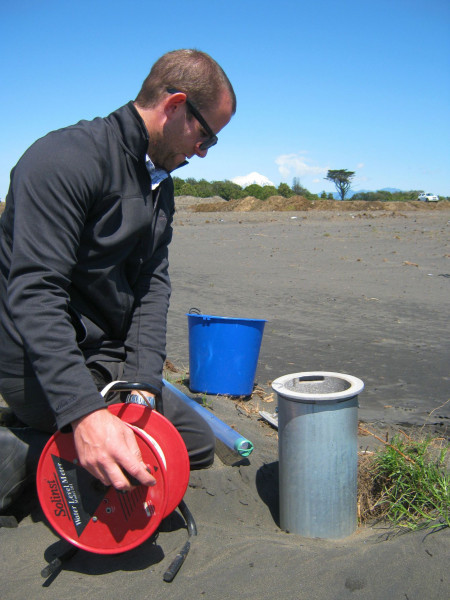The environmental performance of consent holders is closely monitored by the Council, with results reported to the community.

The Council’s scientific and technical officers prepare 100-plus monitoring reports each year, most of them annual, biennial or triennial compliance reports covering large individual consent holders in most cases, or a number of smaller consent-holders – within a particular catchment, for example. There are also reports covering one-off activities such as exploration drilling in the oil and gas sector.
For less significant consents, such as for dairy effluent treatment and disposal, region-wide inspection programmes are completed. Approximately 3,300 inspections are undertaken annually as a result of these monitoring programmes, which are carried out on a user-pays basis.
- Water sampling, to measure parameters such as bacteria levels, water clarity, conductivity and acidity (pH levels), nutrient levels, dissolved oxygen levels and the amount of oxygen consumed in the breakdown of organic matter. The latter measure is known as ‘biochemical oxygen demand’ or BOD, and is low in healthy rivers.
- Freshwater biological surveys, in which a waterway’s ecological health is assessed using an internationally recognised index based on tiny animals – including insects, crustaceans, molluscs, worms and leeches – found in waterways. These creatures are called macroinvertebrates and the index is called the Macroinvertebrate Community Index, or MCI. The MCI takes account of how sensitive each creature is to the quality of the stream habitat.
- Groundwater level and quality assessments.
- Soil sampling, to check for any contaminants.
- Stream flow measurements, to set abstraction rates for water users and dilution rates for discharges.
- Electric fishing, a method of temporarily stunning fish so they can be identified and counted, to assess the health of a waterway and the effects of in-stream structures and the effectiveness of fish passes.
- Dye dilution studies, in which coloured dye is injected into discharges so their rate of movement, direction of travel and dilution can be assessed.
- Marine ecological surveys, in which the state of the life on rocky reefs is systematically measured at low tide using grids to allow an accurate assessment of the whole. Similar surveys can take place in other marine environments, and bacteriological, virus and metal levels in shellfish are also measured.
- Odour surveys, in which residents in a particular location are invited to keep a diary noting details of odours including strength, characteristics, time of day and wind speed and direction.
- Stack (chimney) particulate measurements and sampling, to assess the level of tiny particles (particulates) within emissions from industrial sites, and to analyse the particulate matter for potentially toxic metals such as lead or zinc.
- Gas emissions sampling and downwind sampling, to assess levels of gases including nitrogen oxides, sulphur oxides, formaldehyde, methanol, vinyl chloride, benzene, toluene, xylene, phenol and others.
- Time-lapse imaging, to record the visual appearance of a discharge to air or to water.
- Auditing supplied data, which companies are often required to gather because it is a condition of their resource condition, and/or it is their internal policy to do so. The Council will always audit this supplied data, for example by way of inter-laboratory comparative analyses, to ensure that the quality of the information is acceptable.